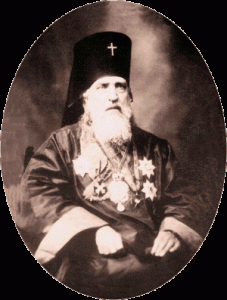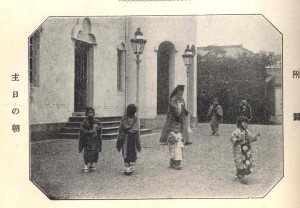In our church the Creed begins with the words “I believe…” This is a personal affirmation of faith. However, if one visits various Catholic and Protestant churches one will sometimes find the Creed begins with the words “We believe…” This is not primarily a translation issue so much as reflecting two dimensions of faith. When we say “We believe” we emphasize that our faith is a corporate faith. In other words, we are not “rugged individualists” who read the Bible or have religious experiences and then found a new theology or even a new church based on our personal insights. This does not mean that we cannot think about our faith or even have questions about it, but it shows that we have not created our own individualistic, idiosyncratic religion, but that we defer to the wisdom of the church. As the English writer G. K. Chesterton wrote, in the church we practice “the democracy of the dead.” In other words, we don’t think that something which is modern is necessarily better than something which is old; the dead have a voice in our faith.
On the other hand, when we say “I believe” we assert that our faith is something personal to us. It is not enough to repeat the Creed as if it were something external to us, someone else’s faith. We have to know our faith. Knowing our faith is something which is not only intellectual. It is good to know about our faith. In the age of the internet answers to our questions can be found at the push of a button (not that we should believe every religious opinion on the internet). But we can also learn about our faith by reading about it in books. The Orthodox Church in America is blessed with many excellent publishers beginning with our seminaries and extending to many private publishers. One can find books about Orthodoxy from the elementary to the advanced.
Also, we can learn about our faith in church. If we pay attention to sermons, we will often gain insight into some aspects of the faith. But priests are human, so sermons are not always adequate. The primary way we can learn about the faith are the hymns and prayers we sing or hear. Orthodox hymns and prayers, more so than those of other Christian churches, are often dogmatic, revealing some aspect of the faith. Very often, the liturgical texts explain the events of the Bible. For example, on Epiphany we read about the baptism of Jesus Christ. To learn the significance of the Gospel passages we can turn to the troparion of the feast which draws out the meaning of the Gospel account.
When Thou, O Lord wast baptized in the Jordan the worship of the Trinity was made manifest. For the voice of the Father bore witness to Thee and called Thee His beloved Son. And the Spirit, in the form of a dove, confirmed the truthfulness of His word. O Christ, our God, who hast revealed Thyself, and hast enlightened the world, glory to Thee!
In other words, the Biblical account of Christ’s baptism is not simply an account of an event in Christ’s life, but it is the first explicit expression of the Christian dogma of the Trinity. This can be said of the texts of most of our Sundays and feasts. It is, of course, sometimes difficult to pay attention to what is being read or sung but the repetitive nature of Liturgy gives us many opportunities to hear what is being sung or read.
However important as it is to have at least some intellectual knowledge of our faith, knowledge of our faith is not entirely or primarily intellectual. An early church writer said “The one who prays is a theologian. A theologian is one who prays.” In other words we learn theology ‘on our knees’ as Western Christians sometimes say. A merely intellectual understanding of our faith without a personal encounter with God will not save us. So whether we begin the Creed “I believe” or “We believe” all these dimensions are included.
Fr. John


